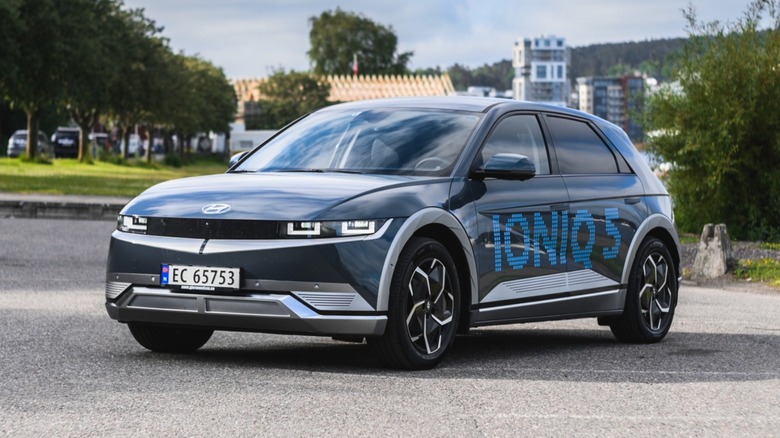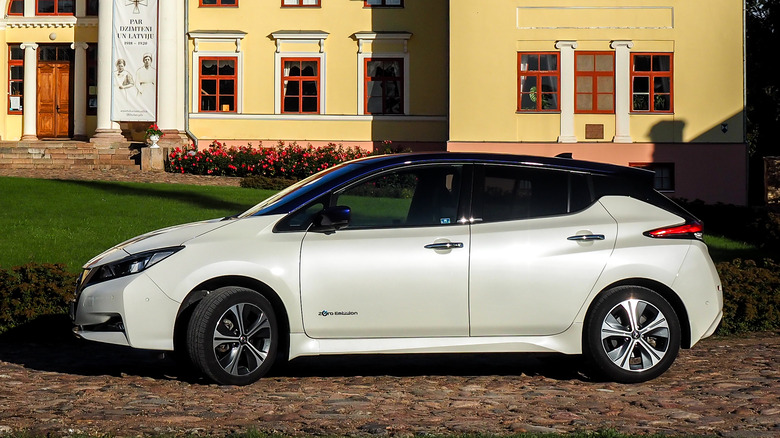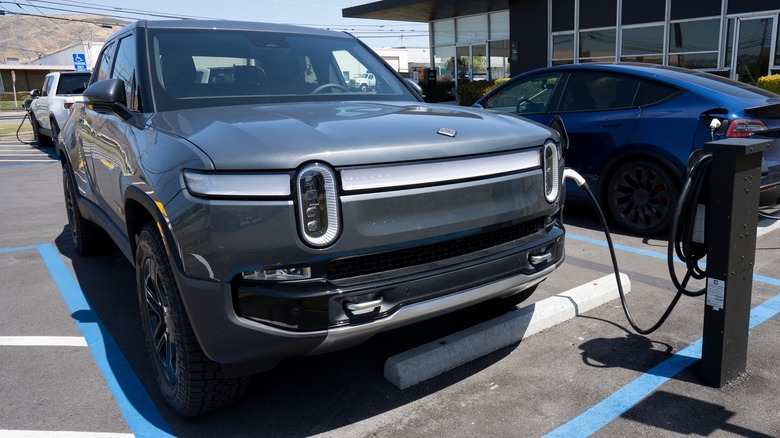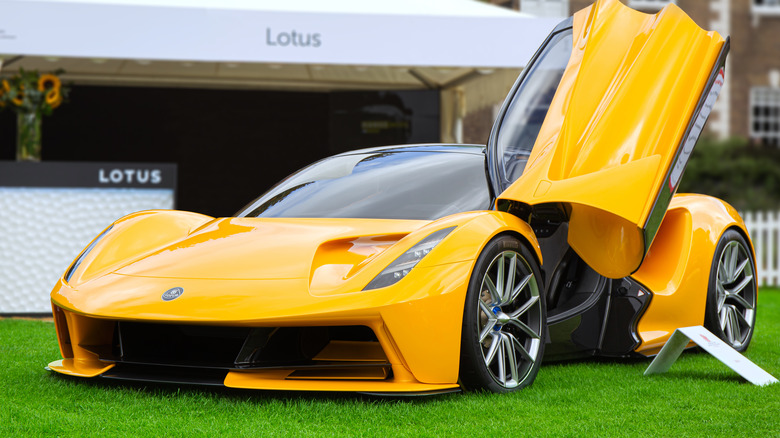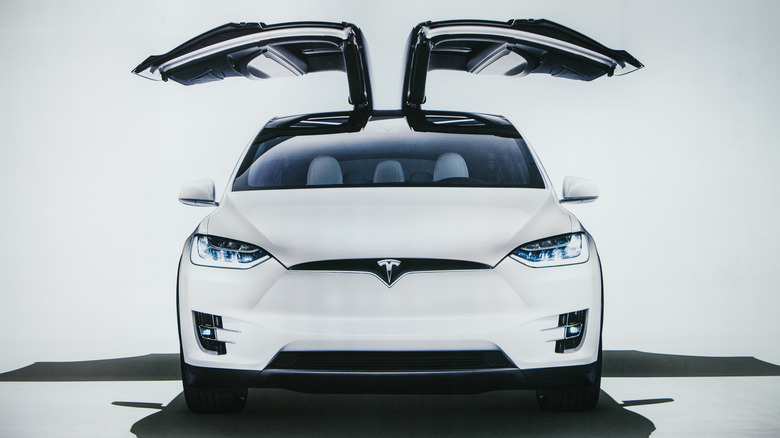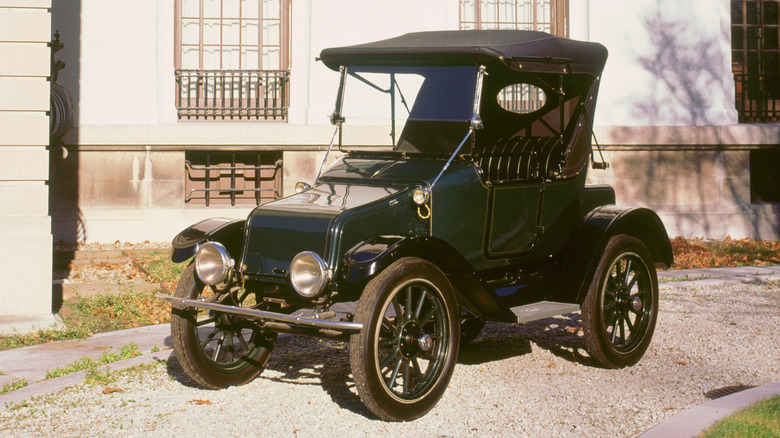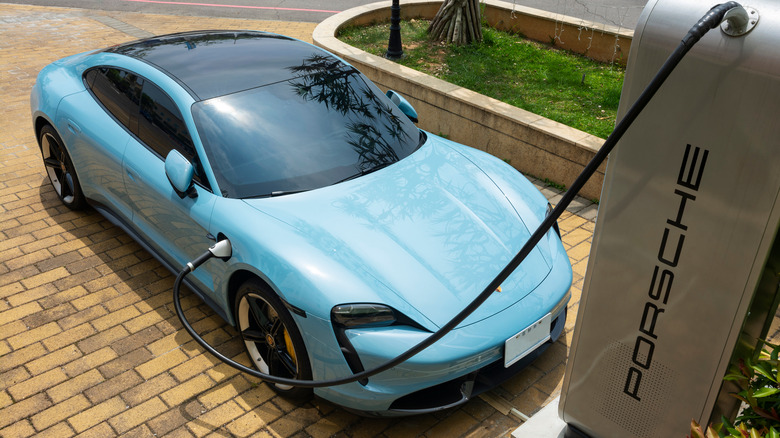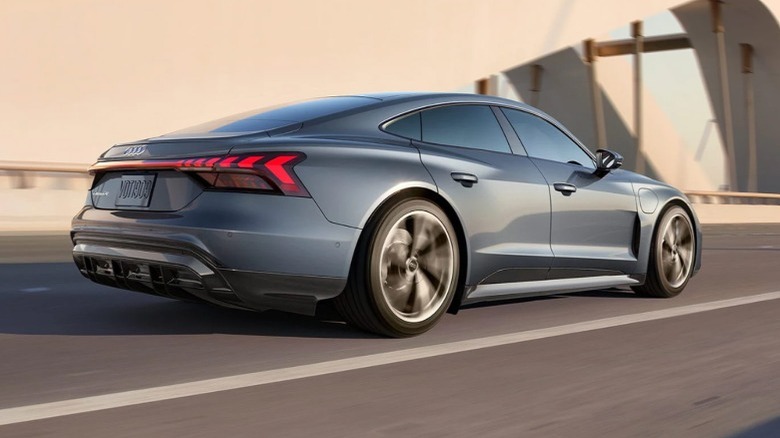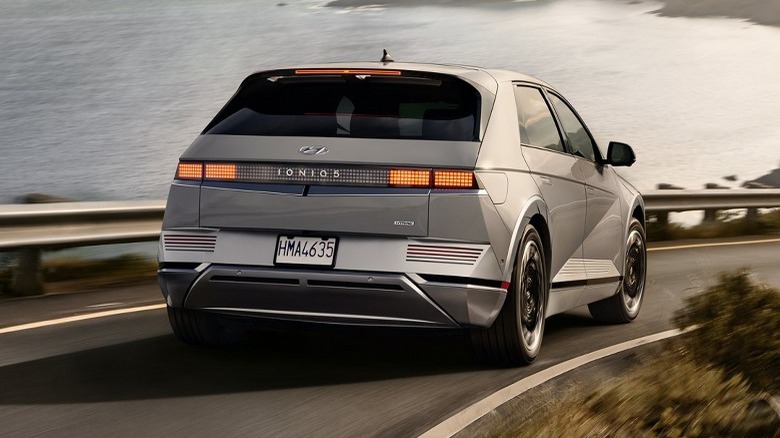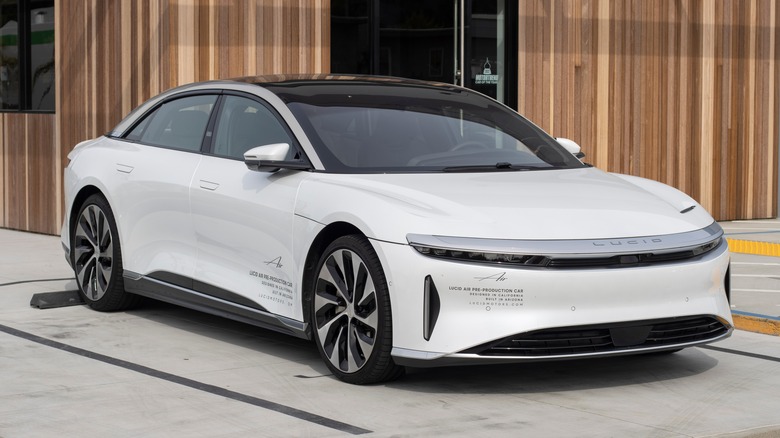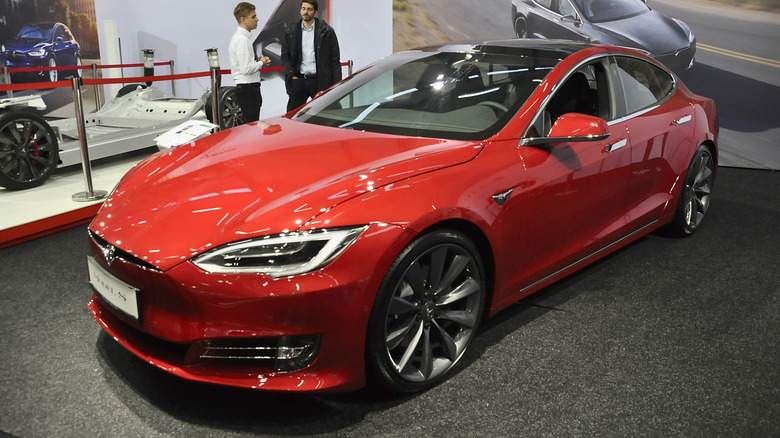The 10 Most Impressive Electric Cars Of All Time
Once thought of as a niche toy for the wealthy or a fanciful project for tech dreamers, the EV has come into its own and entered the mainstream in a big way. Thanks to pioneering tech such as the GM EV1 and the original Tesla Roadster, electric propulsion has proved itself to be a practical powertrain for modern automobiles.
The proliferation of electric drivetrains has brought many players to the market with products for a huge variety of customers. A huge portion of these cars carry costs that cater to luxury buyers. New technologies are often expensive and require buyers with above-average means to get the industry a jumpstart before widespread adoption lowers manufacturing costs. However, the technology is mature enough that it is not filled with only luxury vehicles and some excellent examples of affordable and mainstream cars are available right now.
So, to judge which EV is the best depends on the criteria employed. What is most important is how well a vehicle serves the purpose for which it was created. While the full list of available EVs on the market today is briefer than that of gas or diesel cars, we still have more than enough to make a list of the 10 most impressive electric cars to date.
Nissan Leaf
The Nissan Leaf is a relatively basic, no-frills EV that is not exceedingly fast, stylish, or technologically advanced. It is a basic commuter car that offers a somewhat limited range compared to the competition, but it was a top safety pick from IIHS. For all intents and purposes, it is an ordinary, average car that happens to be run by batteries. It does not appear to be the best of anything.
Where the Leaf has excelled is availability. Nissan was the first modern established car company to offer a fully electric vehicle in its showrooms alongside its regular lineup. The Leaf has enjoyed a relatively good reliability rating and it is not too expensive for average folks to buy. It excels in being a car that can actually expand electric car ownership, instead of being limited only to the well-heeled minority. According to Car Expert, the Leaf went on sale in 2010, beating Tesla to market by two years with a mass-produced EV. The leaf is now on its second generation and selling well. The car is unpretentious and seeks nothing more than to provide reliable transportation at a reasonable cost.
Rivian R1T
Now that customer vehicles are rolling off the assembly line, the much anticipated Rivian R1T pickup is on its way to taking over the electric truck market. Rivian's approach differed from most other electric carmakers by starting off with a truck. That was probably a good decision in the United States, a country where the best-selling traditional gasoline vehicle is a pickup. That said, the Rivian does have a lot of hype to live up to as we have been talking about it for around four years now.
An old axiom for a successful business is to under-promise and over-deliver. Rivian has built up a lot of promises, but it appears it is on track to hit the mark with the delivery. Production vehicles come with an impressive amount of standard equipment and the optional bits are fairly impressive to boot. Car and Driver found the real-world range — about 220 miles on a single charge — on the disappointing side, but the vehicle made up for it by having a great ride and impressive acceleration.
Among the standard features are the gear tunnel, air compressor, and pullout Bluetooth speaker. Also, the coolest option has to be a full outdoor kitchen custom fit for the gear tunnel. While the range drops precipitously while towing, the R1T is rated for 11,000 pounds. Being the first does not automatically grant being the best, but from initial reviews, Rivian appears to be in a good position to take the lead.
Lotus Evija
From the start, Lotus founder Colin Chapman adhered to a car-building philosophy of making cars faster by reducing weight. According to the manufacturer, Chapman said, "Adding power makes you faster on the straights, subtracting weight makes you faster everywhere." Lotus has not always made the all-out fastest machines on the track, but they have made plenty of cars that can win a checkered flag. While some of their cars are powered with their own in-house developed engines, some have been powered by Ford or Toyota and tuned to Lotus specs. Lotus has announced that future development will be all-electric and have burst onto the electric sports car scene with a very impressive car called Evija.
Production of the electric hypercar began in 2020, but the vehicle is not yet ready to hit the road here in the middle of 2022. The limited production of 130 cars is completely sold out at more than $2 million each and Lotus suggests they'll be delivering an awful lot of car for the money. While Chapman always tried to deliver cars that were light above all else, the Evija is powerful in a big way. The electric Evija is not only a lightweight car, it boasts more than 2000 horsepower and 1250 pound-feet of torque. According to CNET, Lotus says this vehicle is its introduction of an all-new electric auto architecture and is the shape of things to come. The other thing about it that is pure Lotus is that it is stunning.
Tesla Model X
Tesla set the table with its Lotus-based electric Roadster to test the waters and prove a battery-powered car could work. With that successful project underway, an ambitious plan to release a sedan followed and gave us the iconic Model S. But to survive the modern auto industry landscape, an SUV is imperative to have on offer, and Tesla built the Model X.
A few companies have started to build electric SUVs, and more will likely follow in the near future. But it was Tesla that was first to release one with rear doors that open up toward the sky. Model X rear doors — dubbed Falcon Doors by the manufacturer — are reminiscent of the gullwing doors of a classic Mercedes 300SL (not to mention the shape of Tesla's logo). The Falcon Doors are impressive on their own, but the Model X also has three rows of seating. For the size of the car, having that music passenger space while keeping a perfect crash rating from the NHTSA is most impressive.
Baker Electric
We'd be remiss to make a list of the most impressive electric vehicles without mentioning the one that came first, then went on to dominate a rather specific market segment to boot. The Baker Motor Vehicle Company commenced production in 1899, a time when motor vehicles, in general, were anything but standardized. This allowed for experimentation of all manner of propulsion, layout, and styling. Baker chose batteries, and Hemmings tells us it got a little help in the development from Thomas Edison himself.
The Baker Electric was a fairly advanced vehicle for its time. The vehicle's motors produced about four horsepower and could get moving at about 25 mph. The New York Times said it was good for about four or five hours on a single full charge with a range of about 110 miles. Baker also took care to adorn the inside of it with fine appointments, including expensive fabrics with tassels, braided cords, and embroidered straps.
So the Baker was not any sort of lightning-fast roadster with a million miles of range, but a simple and reliable runabout that helped get people on the road when that was the entire goal of cars in general. The Baker allowed the side-stepping of the work of hand-cranking an engine or handling the maintenance required of other non-electric vehicles, giving more individuals the opportunity to drive than most other vehicles at the time.
Porsche Taycan
It should come as no surprise that when Porsche decided to enter a new market segment, nothing would be compromised. Just as it entered the SUV segment by producing a vehicle with much better-than-average qualities, the Taycan does the same for its EV. Debuted in 2020, the Taycan was Porsche's entry into the EV market in a way that said Porsche was all-in on electric powertrains.
While the Taycan is not the first-ever electric vehicle to bear the Porsche name, it is the first to enter mainstream production. Even though it has room for a small family, it still performs like a Porsche. Our reviewer found the Taycan to be a highly competent car with a ride and handling not unlike a 911, which was one of Porsche's goals for the car, to begin with. The most obvious car with which to compare is the Tesla Model S, and the Taycan comes out on top not for having the absolute most power or speed, but for feeling put together and planted throughout the driving experience. Porsche is well known for dependable and well-built cars that go very fast and, if the Taycan is a preview of what is to come, going electric won't be slowing the company down at all.
Audi e-tron GT
Volkswagen's luxury brand, Audi, has always been a bit smaller than its German brethren from Munich and Stuttgart, but in no way does that means its cars are lesser vehicles. Audi has been responsible for a great deal of innovation and introducing us to some fantastic automobiles over the years, including the trailblazing Quattro of the 1980s. Today, Audi is attempting to blaze another trail with a massive flow of electrons in its e-tron GT electric luxury sports sedan.
In terms of power, range, speed, and acceleration, the Audi e-tron is not setting any records. It is keeping up with the pack by delivering a range of about 230 miles and propelling the car with up to 637 horsepower (via Car and Driver). What Audi has always done well is package solid cars with good performance that are paired with luxury appointments that aren't pretentious. Audi design is generally on the leading edge, and the e-tron is no exception.
Where the e-tron excels is interior packaging. It is just a beautifully constructed cabin. It has a nice mix of touch screen controls and physical buttons, and the lines from the dashboard run seamlessly through to the door panels. It is sleek and modern without being too sparse and minimalistic. It looks like a pleasant place to spend time on long stretches of highway. The exterior is a match to the interior, being aggressive without being gaudy and representing an understated luxury that seems to come naturally to the designers and engineers at Audi.
Hyundai Ioniq 5
For all of the advances in the growing business of electric cars, Hyundai is the player to look out for. It has started down a course of electrification with hybrid and EV products that are not only selling well but impressing upon the automotive press that Hyundai is going all-in on the technology. The Hyundai Ioniq 5 is among the newest in the offering of full-electric vehicles from Hyundai and not only introduces the electric drivetrain but also introduces a stylistic direction for the company and a new sub-brand called Ioniq.
With crisp, angular creases running the length of the car finished off by a rear light panel consisting of rows of individual LED lights Hyundai calls pixel lights. We reported that the car should have a range of about 269 miles coming from single or dual electric motors. The dual-motor version will deliver 320 horsepower and an impressive 446 lb-ft of torque. The interior will be outfitted with a couple of large, dynamic screens for gauges and infotainment with upscale trim for the upholstery and interior.
While Tesla and Porsche are making high-priced extreme performance cars for those who can afford them, Hyundai is bringing in electric vehicles that will actually work for everyday folks. With the stunning, modern lines of the Ioniq, Hyundai is working hard to impress and seems to be pulling it off quite well.
Lucid Air
After a long wait, Lucid vehicles are now coming off of the production line and onto the streets. Unlike the electric efforts of Hyundai or Nissan, Lucid is specifically targeting the luxury car customer and building cars that should be packed with impressive technology as well as the finest materials and features found in luxury cruisers. While the Lucid retail price is well into luxury territory, it comes with much more than just soft leather and plush wool carpeting.
To claim the Lucid is impressive only needs a mention of its range. With an estimated possible driving distance of 520 miles, no other electric vehicle on the market today can touch it. This vehicle also sports a list of noteworthy features, including an output of 1100 horsepower and a zero to 60 mph time of under 3 seconds. This vehicle also carts around an advanced driver assistance system with 32 sensors and 14 cameras, and it uses Electrify America's charging network to replenish 300 miles of range in just 20 minutes from 350 kW chargers.
It seems that the luxury EV market is Lucid's to lose, at the moment. Provided it is not plagued by quality issues or bad management, it should have a long future as a premium EV auto manufacturer.
Tesla Model S Plaid
Tesla is the longest-running producer of electric vehicles and now has the most models on offer. While the Model S has been in production since 2012, it is not slowing down. One of Tesla's selling points has always been its impressive power output and battery capacity. From the start, Tesla cars have been practical cars that could drive a reasonable distance, but also get there in a hurry with impressive acceleration. After a decade of production, Tesla kicked expectations up a few notches with the Plaid.
Not only does the Model S Plaid pushes the boundaries of technology and big business, often adding whimsical quirks into its car that seem to have been added by children rather than serious auto executives. The Model S Plaid is the fastest Tesla to date and has a significant list of features that make it an impressive car, like being the first electric family sedan that can accelerate from zero to 60 mph in under 2 seconds.
